Plot summary
Walsh Clifton is an Anglo-Indian born of an interracial couple. His mother dies during childbirth in the opening scenes of the novel. He is raised in India by his father, John Clifton, and his Aunt Brenda. Walsh is torn between his strong ties to India and his position as a colonial. He appears most comfortable around Indian characters, though they are not thoroughly developed in the novel, and he is regularly discomfited by representatives of European culture and Christianity in particular. He develops a sense of superiority over several Indian characters, typically echoing other European characters, but these feelings are regularly thwarted, often in tandem with challenges to traditional European notions of masculinity. This is compounded by Walsh's increasing awareness of his mortality, symbolized by the human ankle bone he sees in a pyre and his grandmother's morbid fixation on death.
Walsh is sent "home" to England for his education by his father, where he is again caught in a conflict between being English or Indian. The former is often associated with paternal and masculine identity, while the latter is frequently tied to maternal and feminine identity. This portion of the novel is largely concerned with his schoolboy experiences, his developing sexuality, and the eventual death of his father, who has remained in India. The protagonist has homosexual experiences, significant dream sequences, and comments on his wide readings.
The final portion of the novel consists of a bohemian stage in Walsh's life, set in Soho and outside London. He earns his living on his inheritance and by composing jazz music. Walsh ultimately rejects this lifestyle and concludes the novel with his first love, Ruth, who is terminally ill. She is diagnosed by the same doctor who delivered him and witnessed his mother's death.
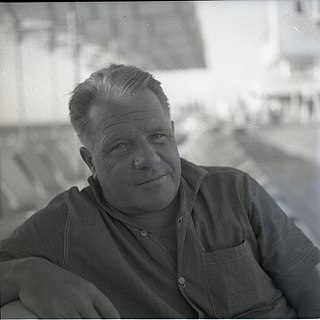
Lawrence George Durrell was an expatriate British novelist, poet, dramatist, and travel writer. He was the eldest brother of naturalist and writer Gerald Durrell.
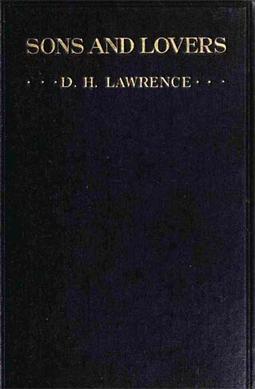
Sons and Lovers is a 1913 novel by the English writer D. H. Lawrence. It traces emotional conflicts through the protagonist, Paul Morel, and his suffocating relationships with a demanding mother and two very different lovers, which exert complex influences on the development of his manhood. The novel was originally published by Gerald Duckworth and Company Ltd., London, and Mitchell Kennerley Publishers, New York. While the novel initially received a lukewarm critical reception, along with allegations of obscenity, it is today regarded as a masterpiece by many critics and is often regarded as Lawrence's finest achievement. It tells us more about Lawrence's life and his phases, as his first was when he lost his mother in 1910 to whom he was particularly attached. And it was from then that he met Frieda Richthofen, and around this time that he began conceiving his two other great novels, The Rainbow and Women in Love, which had more sexual emphasis and maturity.
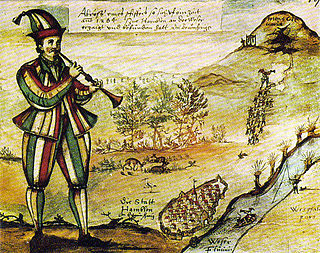
The Pied Piper of Hamelin is the title character of a legend from the town of Hamelin (Hameln), Lower Saxony, Germany.

Gerald Malcolm Durrell OBE was a British naturalist, writer, zookeeper, conservationist, and television presenter. He was born in Jamshedpur in British India, and moved to England when his father died in 1928. In 1935 the family moved to Corfu, and stayed there for four years, before the outbreak of World War II forced them to return to the UK. In 1946 he received an inheritance from his father's will that he used to fund animal-collecting trips to the British Cameroons and British Guiana. He married Jacquie Rasen in 1951; they had very little money, and she persuaded him to write an account of his first trip to the Cameroons. The result, titled The Overloaded Ark, sold well, and he began writing accounts of his other trips. An expedition to Argentina and Paraguay followed in 1953, and three years later he published My Family and Other Animals, an account of his years in Corfu. It became a bestseller.
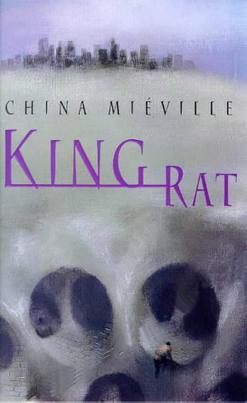
King Rat is an urban fantasy novel by British writer China Miéville, published in 1998. Unlike his Bas-Lag novels, it is set in London during the late 1990s. It follows the life of Saul Garamond after the death of his father and his meeting with King Rat. As King Rat takes Saul under his wing, the young man is quickly embroiled in a centuries-old rivalry. King Rat was Miéville's debut novel.

Margaret Isabel Mabel "Margo" Durrell was the younger sister of novelist Lawrence Durrell and elder sister of naturalist, author, and TV presenter Gerald Durrell, who lampoons her character in his Corfu trilogy of novels: My Family and Other Animals, Birds, Beasts and Relatives, and The Garden of the Gods.
Lawrence Samuel Durrell was a British engineer, best remembered as the father of novelist Lawrence Durrell and naturalist and writer Gerald Durrell.
Louisa Florence Durrell, was a British woman born in India during the British Raj. She was the mother of Lawrence, Leslie, Margo and Gerry Durrell. She was featured in Gerald Durrell's autobiographical Corfu trilogy, which tells about the Durrells' years in Corfu from 1935 to 1939 in a somewhat fictionalized way.
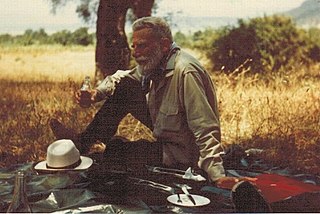
Theodore Philip Stephanides was a Greek-British doctor and polymath, best remembered as the friend and mentor of Gerald Durrell. He was also known as a naturalist, biologist, astronomer, poet, writer and translator.

Justine, published in 1957, is the first volume in Lawrence Durrell's literary tetralogy, The Alexandria Quartet. The tetralogy consists of four interlocking novels, each of which recounts various aspects of a complex story of passion and deception from differing points of view. The quartet is set in the Egyptian city of Alexandria in the 1930s and 1940s. The city itself is described by Durrell as becoming as much of a complex character as the human protagonists of the novels. Since first becoming available to the public and reviewers in 1957, Justine has inspired what has been called "an almost religious devotion among readers and critics alike." It was adapted into the film of the same name in 1969.
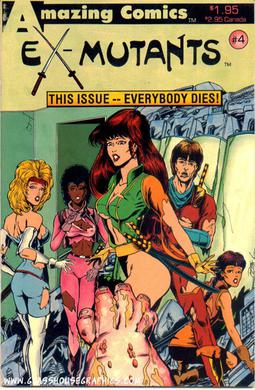
Ex-Mutants was a comic book series created by writer David Lawrence and artist Ron Lim, along with comics packager David Campiti in 1986. It was first published by Eternity Comics and then Amazing Comics, Pied Piper Comics, and finally Malibu/Eternity. Malibu created a shared universe called Shattered Earth with the characters. In 1992, Malibu comics rebooted the franchise with a new continuity. A video game for the Sega Genesis based on the rebooted version was released in 1992, being developed by Malibu Interactive and published by Sega of America, Inc.
The Durrell family lived in India, Corfu, England and other places during the twentieth century. Their lives and travels were documented and made famous through their autobiographical writings, particularly those by Lawrence and Gerald. Other members of the family became notable in their own right. The TV series My Family and Other Animals (1987), the television film My Family and Other Animals (2005), the largely fictionalized TV series The Durrells (2016–2019), and the documentary What the Durrells Did Next were based on these writings.

Loxwood is a small village and civil parish with several outlying settlements, in the Chichester district of West Sussex, England, within the Low Weald. The Wey and Arun Canal passes to the East and South of the village. This Civil Parish is at the centre of an excellent network of bridleways and footpaths crossing the Low Weald and joining with those in adjacent Counties.

Monsieur, or The Prince of Darkness (1974), is the first volume in Lawrence Durrell's The Avignon Quintet. Published from 1974 to 1985, this sequence of five interrelated novels explore the lives of a group of Europeans before, during, and after World War II. Durrell uses many of the experimental techniques of metafiction that he had integrated into his Alexandria Quartet, published 1957 to 1960. He described the later quintet as a quincunx.

The Revolt of Aphrodite consists of two dystopian novels by British writer Lawrence Durrell, published in 1968 and 1970. The individual volumes, Tunc and Nunquam, were less successful than his earlier The Alexandria Quartet, in part because they deviate significantly from his earlier style and because they approach more openly political and ideological problems.

The Black Book is a novel by Lawrence Durrell, published in 1938 by the Obelisk Press.

Panic Spring is a novel by Lawrence Durrell, published in 1937 by Faber and Faber in Britain and Covici-Friede in the United States under the pseudonym Charles Norden. It is set on a fictional Greek Island, Mavrodaphne, in the Ionian Sea somewhere between Patras, Kephalonia, and Ithaca. The island, however, resembles Corfu strongly, and in at least one inscribed copy of the novel, Durrell includes a map of Corfu identified as Mavrodaphne.

Livia, or Buried Alive (1978), is the second volume in British author Lawrence Durrell's The Avignon Quintet, published from 1974 to 1985. Durrell has described the novels as "roped together like climbers on a rockface, but all independent. .. a series of books through which the same characters move for all the world as if to illustrate the notion of reincarnation." The description of this form for the quintet actually appears in Livia. The first novel of the quincunx, Monsieur, received the James Tait Black Memorial Prize in 1974.
Richard Leslie Beswetherick Pine is the author of critical works on the Irish playwright Brian Friel, the Anglo-Irish novelist Lawrence Durrell, and aspects of art music in Ireland. He worked for the Irish national broadcaster RTÉ Raidió Teilifís Éireann before moving to Greece in 2001 to found the Durrell School of Corfu, which he directed until 2010. Since 2009 he has written a regular column on Greek affairs in The Irish Times and is also an obituarist for The Guardian.















